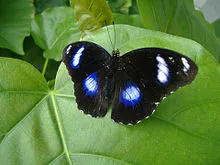When it comes to biology, one of the biggest misconceptions is the Theory of Evolution.
Common Misconceptions
It seems that many are under the impression that the ‘theory of evolution’ is still up for debate, and not accepted as true in modern science. I’m here to tell and prove for some, that this is wrong. There are many observable and recorded examples of evolution in modern history, and I wish to share them with you today and explain their significance.
I think first though, it is important to describe what exactly “the theory of evolution” is, and why we address it as such. This is where the huge misconception lies for most people, which is that they believe the term “theory” in scientific fields is somehow synonymous to an opinion or hypothesis. This is not in fact the case. The term “theory” is more synonymous to a complete scientific model such as in “The Theory” of gravitation, special relativity or heliocentrism. This term is not meant to denote unaccepted ideologies, it is much the opposite. A “Theory” is a term given to explanations of natural laws that have undergone repeat and rigorous observation and empirical testing and have become a comprehensive form of scientific knowledge comprised of many parts they can also then be used to make predictions, and thus be tested further. Evolution being made up majorly of the fields of Speciation, Genetics, and Population Development.
Examples In Modern History
Peppered Moths:
| And so, we get to our first example of the phenomenon that is speciation through the peppered moth. One of my personal favourite examples of evolution in modern history, it is often employed as an instance of directional colour change (phenotypic) due to environmental change or stress. Determined to be in direct correlation to air pollution during the industrial revolution, it is classified as an example of Industrial Melanism. An evolutionary effect prominent in arthropods that induce change in the expressed melanin phenotype due to environmental changes, each case is a prominent example of evolution in modern history.
| White Color Express | Dark Color Expressed |
|---|---|
 |  |
In the case of the peppered moths, their industrial melanism caused a change from the expressed phenotype of white color, to black color. This occurred when the tress in their ecosystem began to turn black from pollution from the industrial revolution, leading white peppered moths to experience a selective disadvantage on their color. Being white made them easier prey to the predators, while peppered moths with a black melanin mutation could thrive and reproduce, changing the majorly expressed color for the population. Although met with some confrontation on reproducibility of results, the Majerus experiment, performed in 2001-2007 has been said to have vindicated the initial study. The significance of this instance of evolution is that it serves as an observable case of color change, which can be considered a quite influential change as it can lead to other speciation events such as behavioural or sexual selection, causing further speciation on a population. |
Moon Butterfly:
| A perfect example of a sexual speciation event is in Hypolimnas Bolina, the Moon Butterfly. Also referred to as the great or common eggfly, it is a species of nymphalid butterfly, the largest family of butterflies in the world. Found in New Zealand, the male population was under harassment by a parasite (which was determined to be quite likely Wolbachia) that preyed on the male butterflies resulting in a rapid reduction down to a 1% male population by 2001. The surprise came when in 2007 on the Samoan Island of Upolu and Savai’I, the male population began to bounce back an develop a resistance against to the parasite. It was reported that by 2007, the short span of 10 generations for the eggfly, the males had developed an immunity to the parasite, increasing the male population to 40%. What this example of evolution shows is a selective sexual pressure acting on the male butterflies which resulted in a large decrease in the male population
| Male | Female |
|---|---|
 |  |
. Likely a small population of males with immunity to the parasite initially existed in 2001. However, by 2007, this small population had experience a selective advantage for their immunity, allowing them to reproduce without worry and pass their genes on to further generations. This proves that populations can develop immunity or resistances overtime, which increases the future generations viability. This is a clear-cut example of natural selection in action. |
Find out more about Wolbachia here
Bacteria Evolves in Megaplate
| Following from natural selection, this last example I wanted to share with you guys was a project done by Harvard Medical School. Another case of Evolution through resistance and immunity, this video is not meant to address the mechanism of Evolution, but the direction. Another common misconception I often see or hear is the notion that evolution lead to humans, or that humans are some kind of evolutionary endpoint. Although on a metaphysical, conscious level this is true, we are quiet advanced. We surpass other creatures mentally and are able to build complex culture and technology. But we are definitely no more valuable evolutionarily than any other species. All the thriving species that exist on the planet are just as “evolved” as humans, in that their physiology fits their particular niche and through interaction with their ecosystem they are able to reproduce in numerous, stable populations. If these species weren’t as advanced as us, they simply wouldn’t exist (they would have died off as millions of other species have). We are not a more advanced outcome of evolution, we are simply one result of many, many, many paths that it could’ve taken. |
The video is quiet self explanatory, so turn your volume up, sit back and enjoy this incredible piece of research.
VIDEO:  credit: Harvard Medical School
credit: Harvard Medical School
Thanks for sticking through, upvote and discuss down below so I can continue to bring you guys interesting and informative content like this :). Don't forget to  !
!
Citations and Image Credits:
Peppered Moths
Industrial Melanism
Moon Buttefly
Bacteria Evolution
Image Credits: Moth & Butterfly
